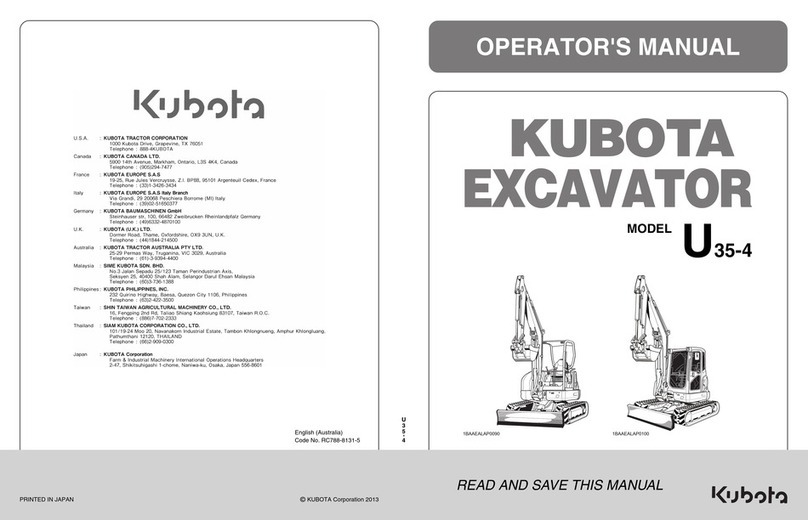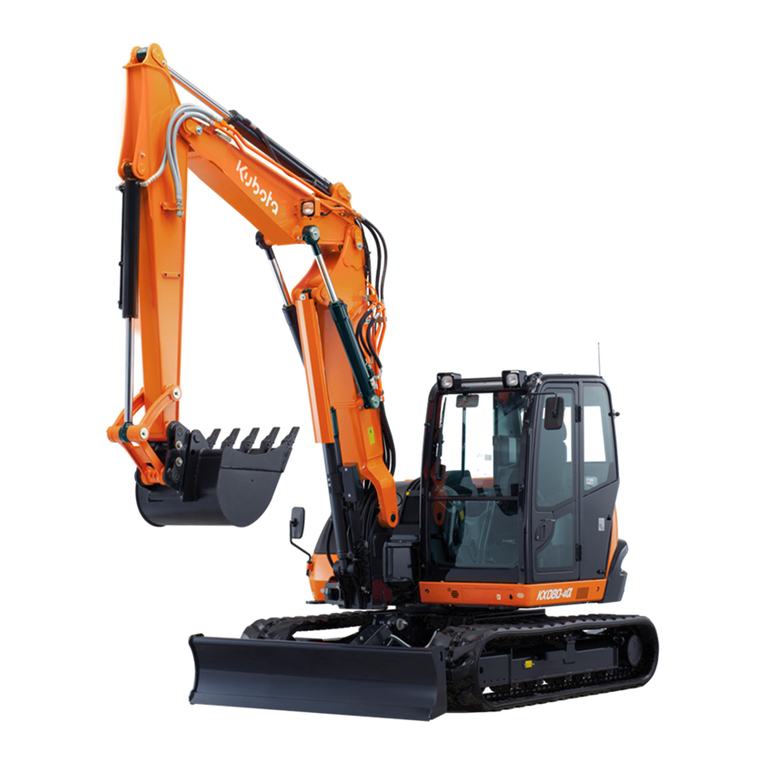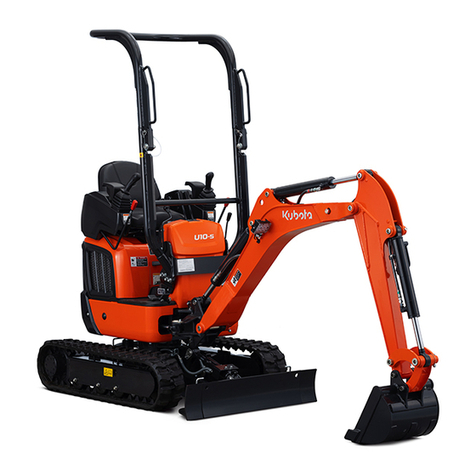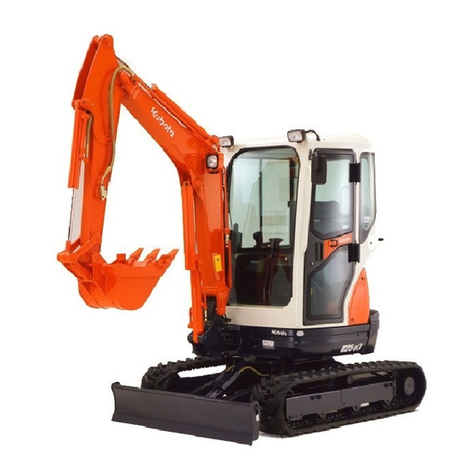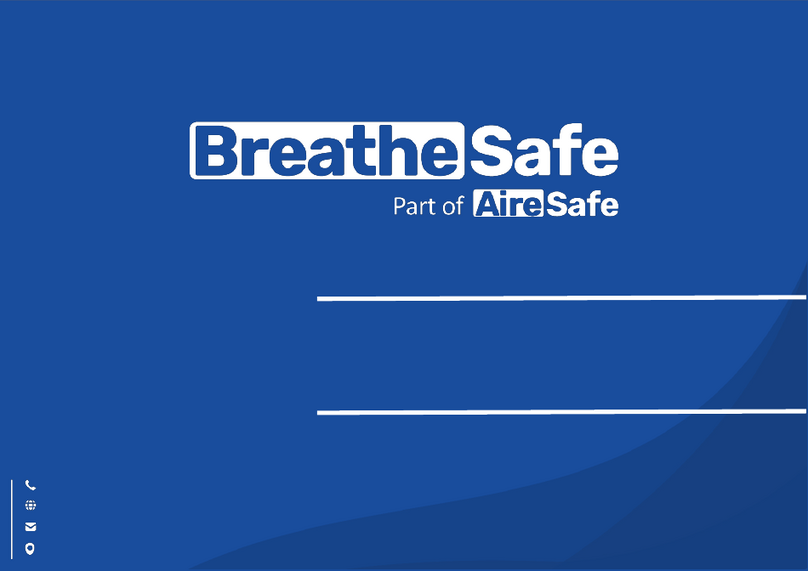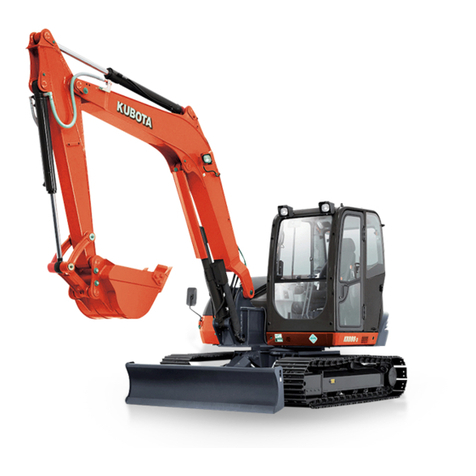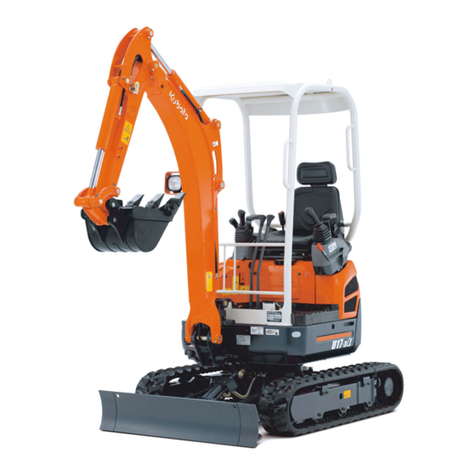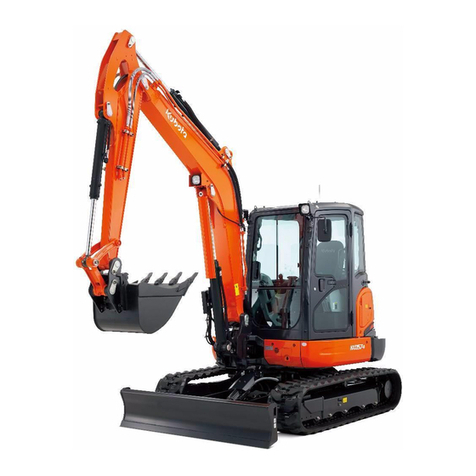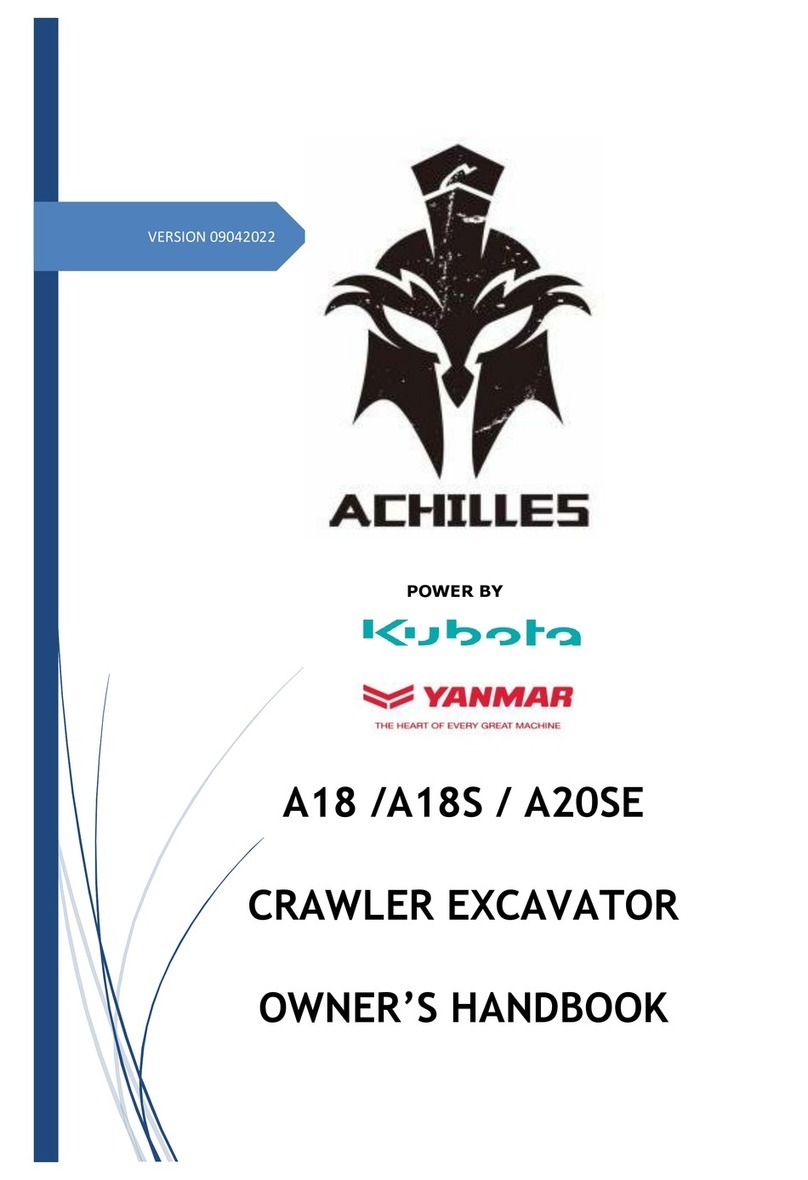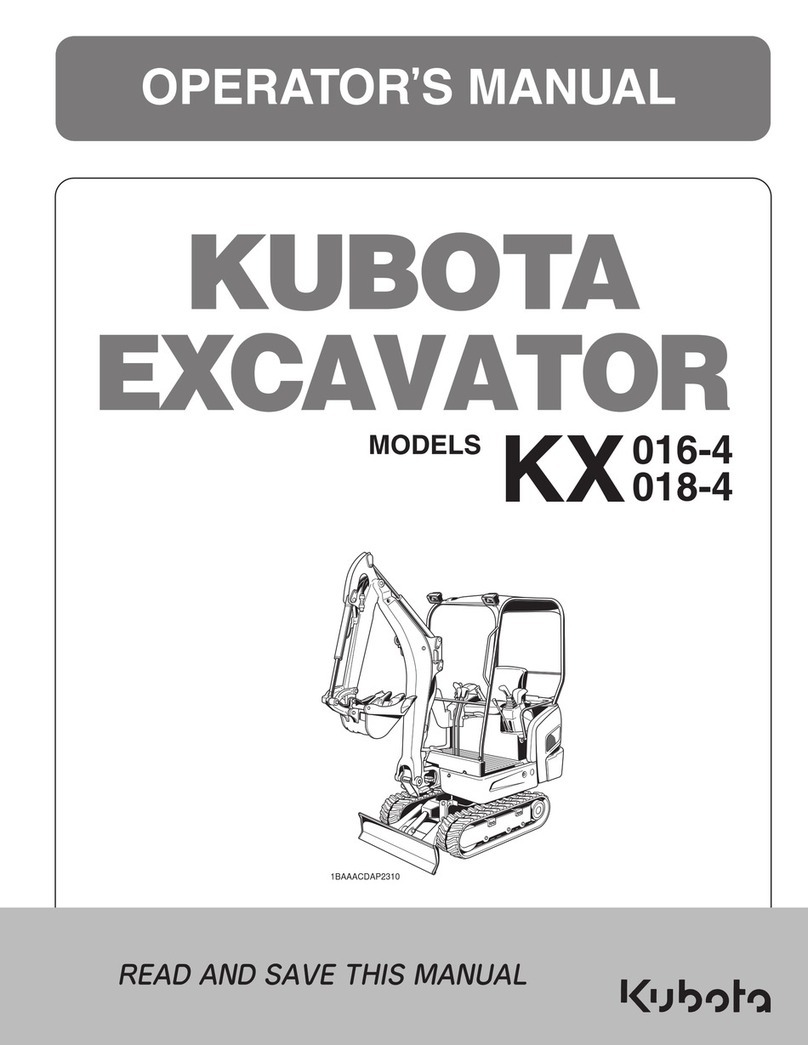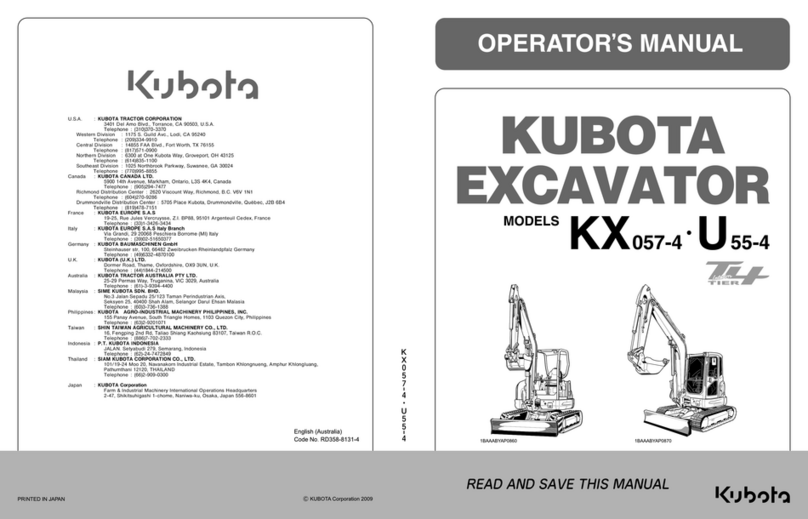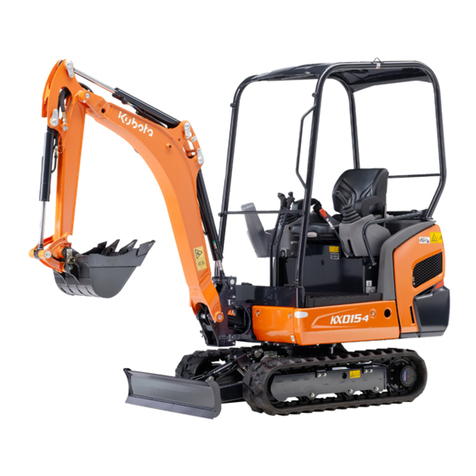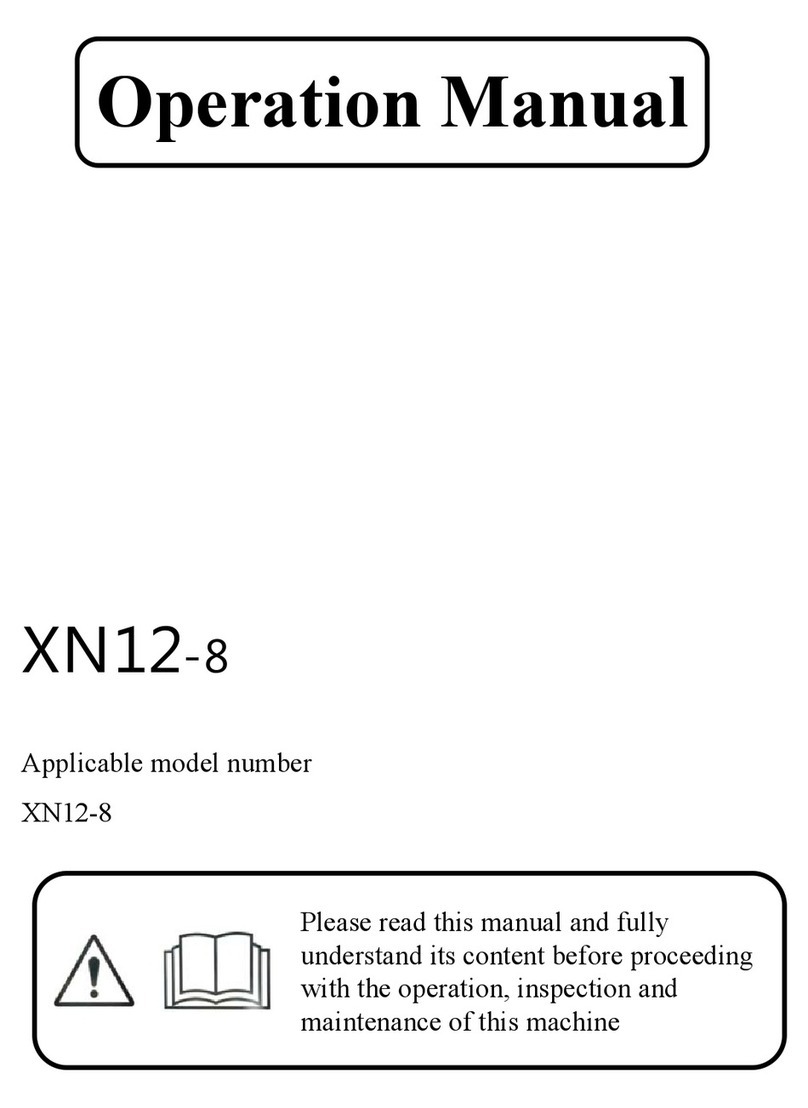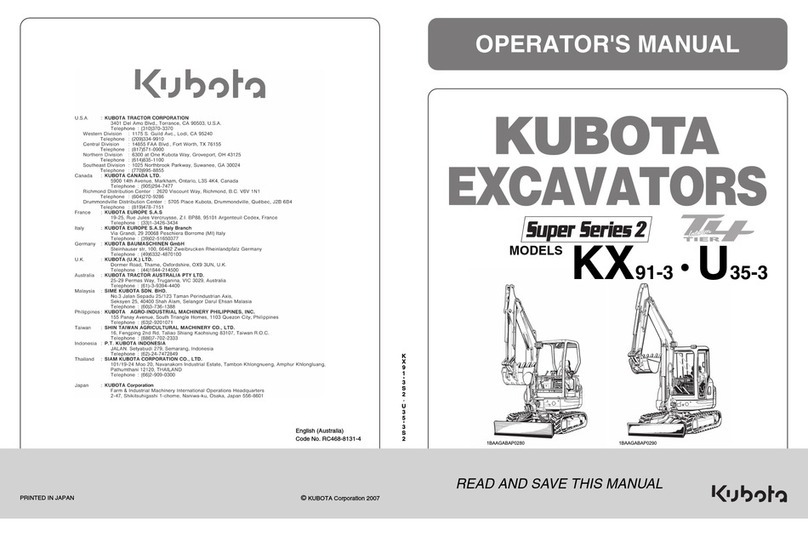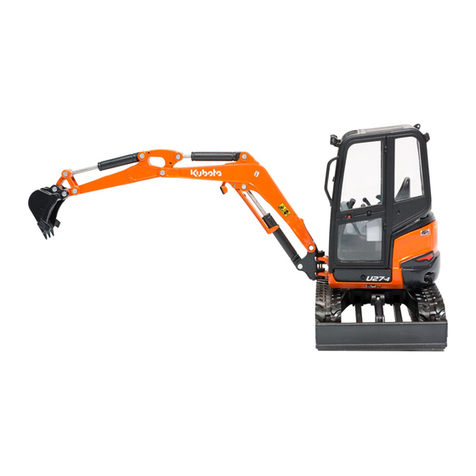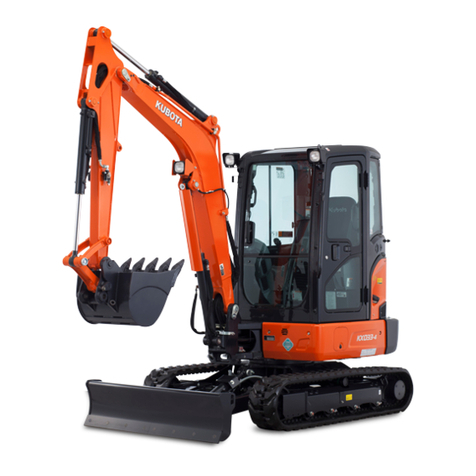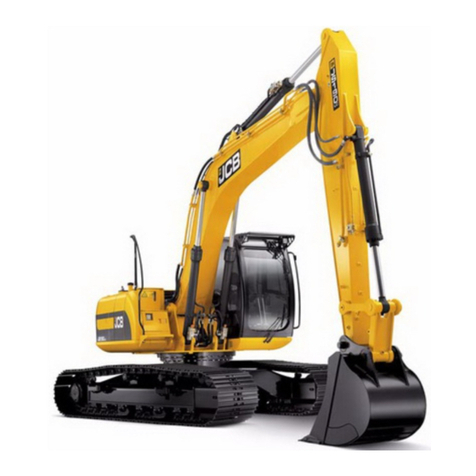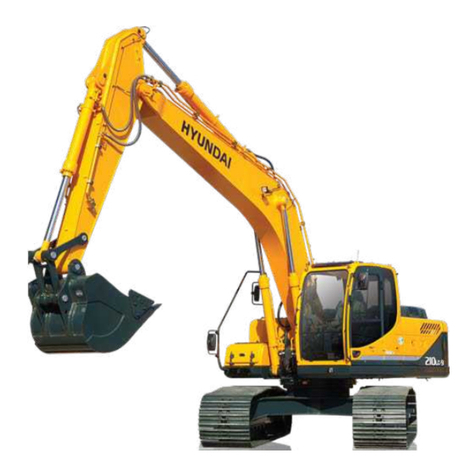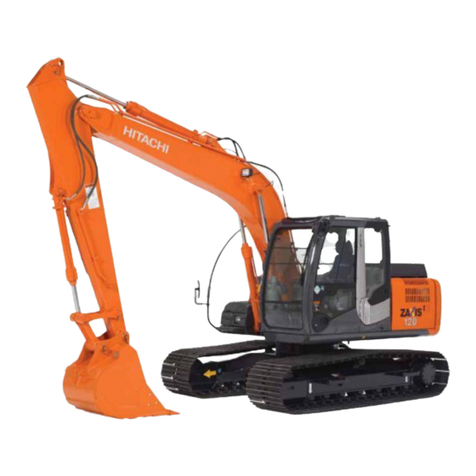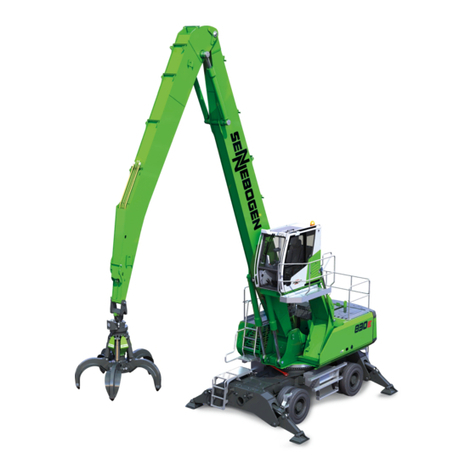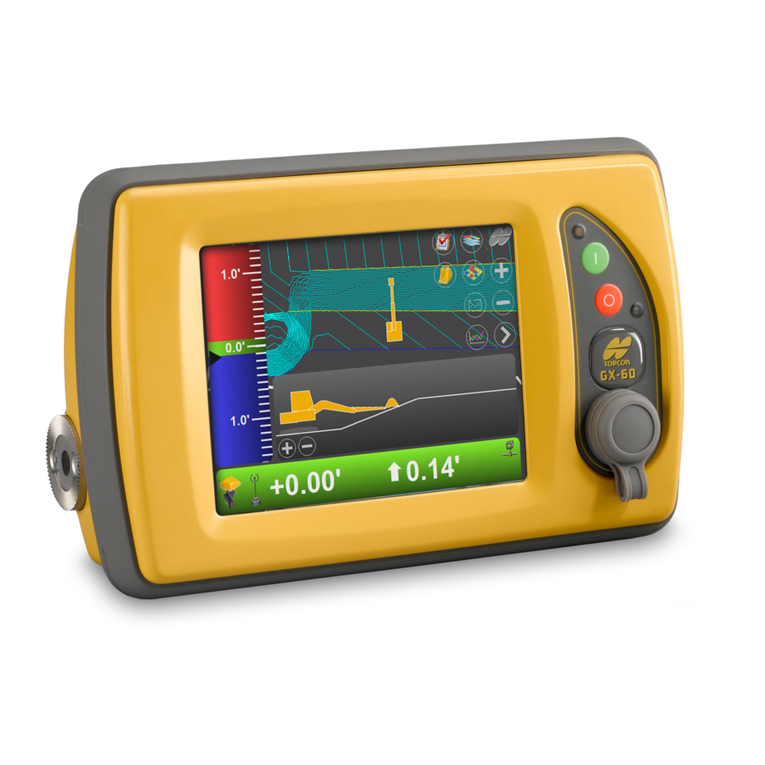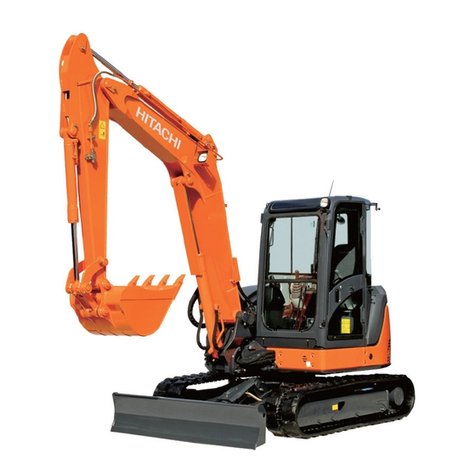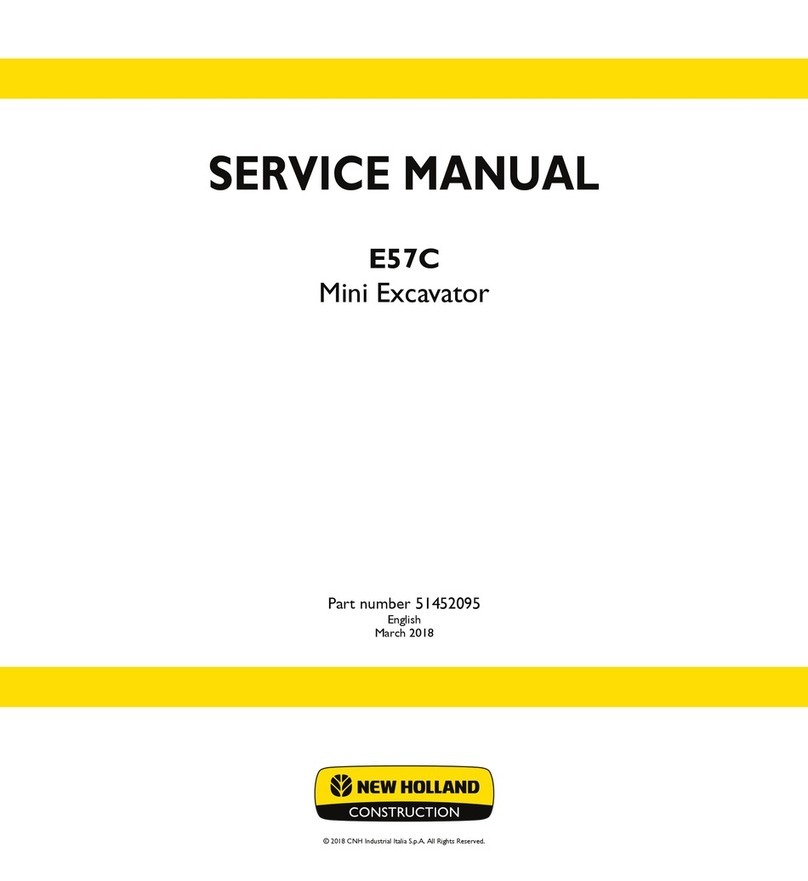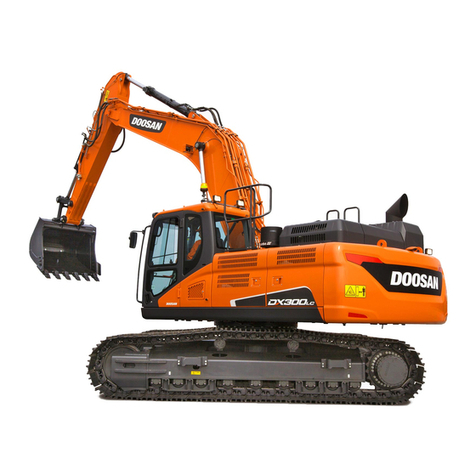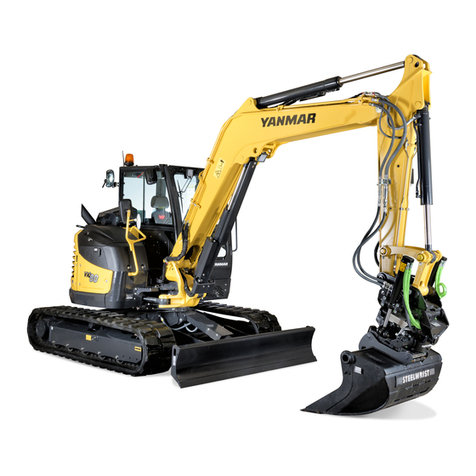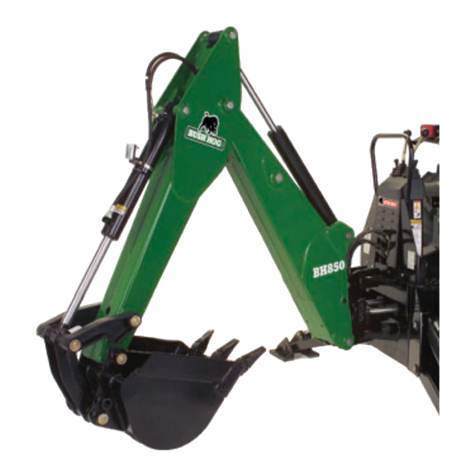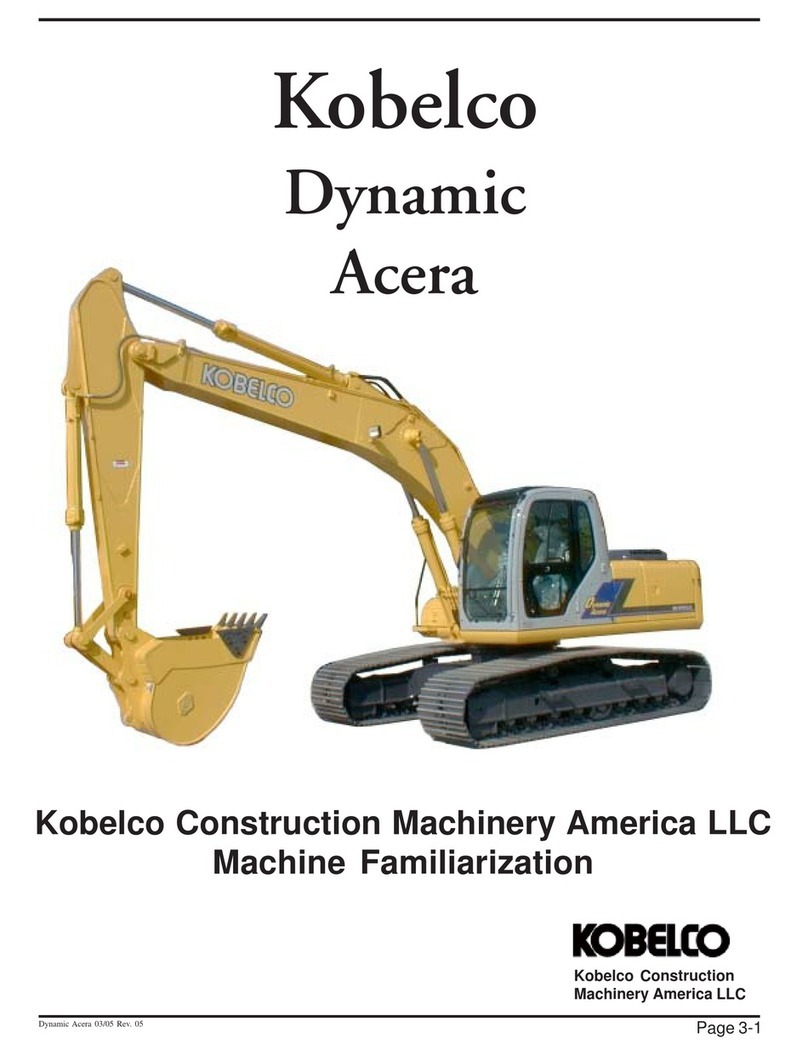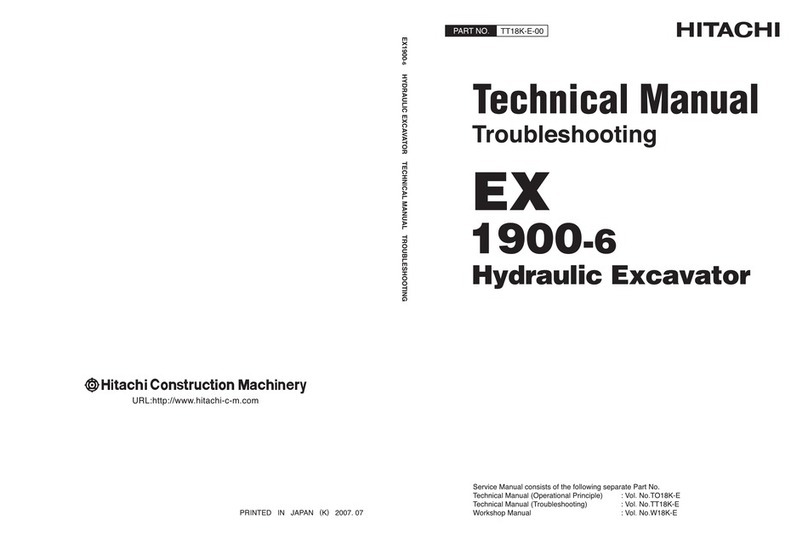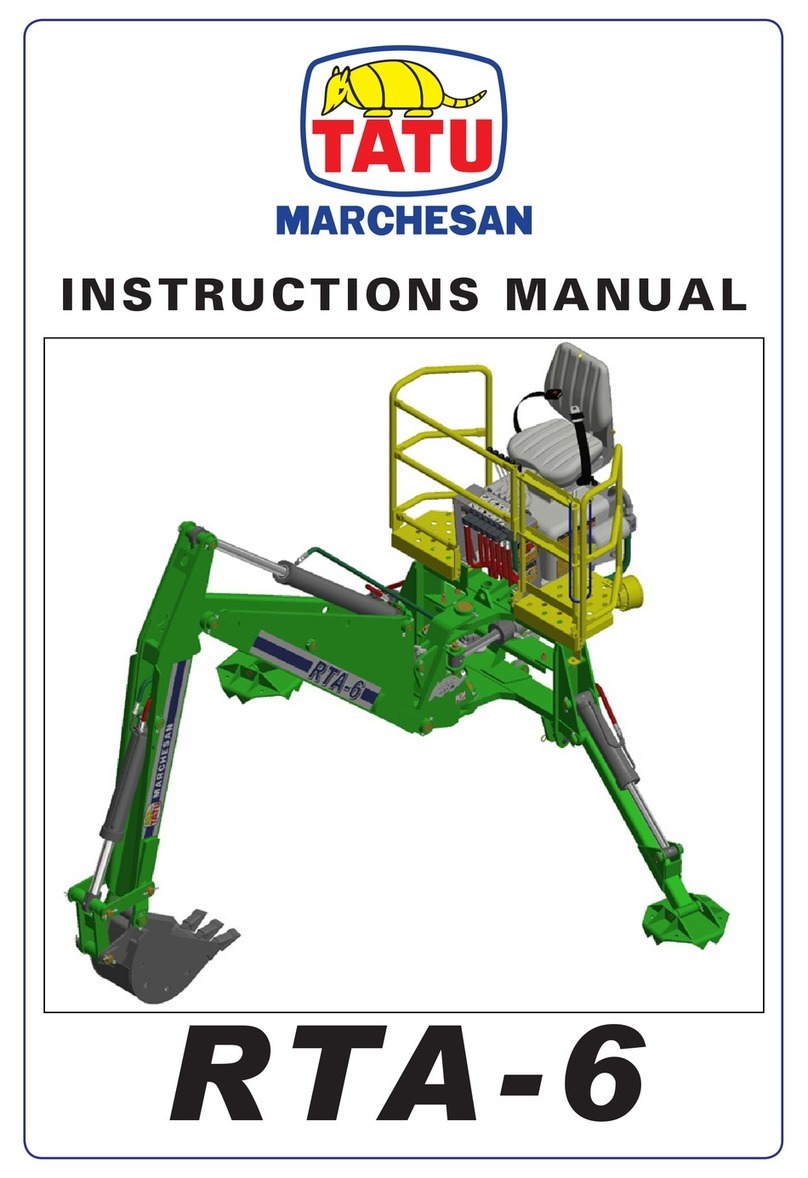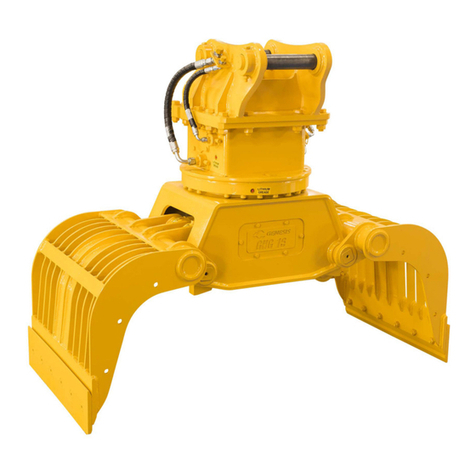
1
The best insurance against accidents is to
abide by the safety regulations.
Read and understand this section carefully,
before operating the excavator.
Every user, however experienced, should
carefully read and understand this section
and those of the attachments and
accessories before taking the excavator into
operation. The owner is obliged to inform
the operators of these instruction in detail.
Keep this manual in the storage place. (See
"Keeping the Operator's Manual" in the
BEFORE START section.)
1. BEFORE OPERATION
1. Make yourself acquainted with the
excavator and be aware of its limits.
Read this operator’s manual carefully
before starting the excavator.
2. Obey the danger, warning and caution
labels on the machine.
3. For your safety, a ROPS/OPG (Top Guard
Level I) with a seat belt is installed by
KUBOTA.
AROPS: Roll-Over Protective Structure
AOPG (Top Guard Level I): Operator
Protective Guards of Top Guard Level I
OPG (Top Guard Level I) in accordance
with ISO10262 is equivalent in definition
to FOPS (Falling Object Protective
Structure).
Always use the seat belt when the
machine is equipped with a ROPS/OPG
(Top Guard Level I) as this combination
will reduce the risk of serious injury or
death, should the excavator be upset or
falling objects occur.
Do not modify any structural members
of the ROPS/OPG (Top Guard Level I)
by welding, drilling, bending, grinding
or cutting, as this may weaken the
structure.
If any component is damaged, replace
it. Do not attempt repairs. If the ROPS/
OPG (Top Guard Level I) is loosened or
removed for any reason, make sure all
parts are reinstalled correctly. Tighten
mounting bolts to proper torque.
4. ROPS meets requirements of ISO 3471.
OPG (Top Guard Level I) meets
requirements of OSHA 1926·1003/ISO
10262.
5. The seat belt must be inspected regularly
and replaced if frayed or damaged.
3
SAFE OPERATION
(1) Seat belt


